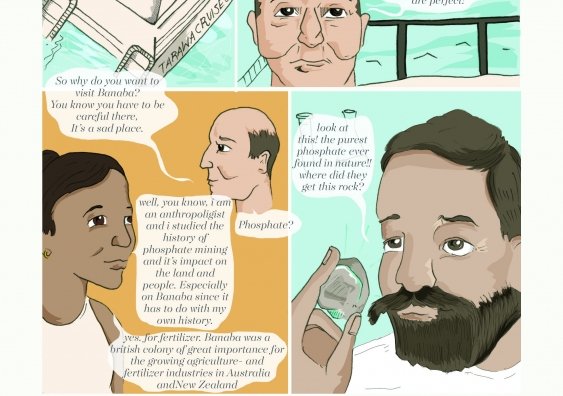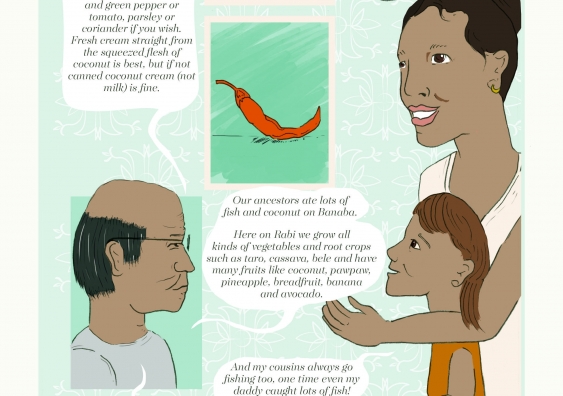Comic book explores global food security
UNSW Art & Design student Samuel Jaramillo’s comic about food security has been selected for inclusion in an international publication.
UNSW Art & Design student Samuel Jaramillo’s comic about food security has been selected for inclusion in an international publication.

UNSW Art & Design student Samuel Jaramillo’s comic about food security has been selected for inclusion in an international publication.
The science comic book, Eating Anthropocene: Curd Rice, Bienenstich and a Pinch of Phosphorus - Around the World in Ten Dishes, which is aimed at high school students, examines human impact on global food production and distribution through the lens of the Anthropocene.
The Anthropocene is the current geological age in which humans are identified as the central shaping force of the biophysical world.
Comprising ten chapters, Eating Anthropocene explores global food security through protagonists and artists from Brazil, China, Germany, Japan, India, Morocco, Norway, Australia/Kiribati, Uganda and USA.
The comic book takes readers on a culinary journey through the continents, providing insights into a multitude of eating habits and food cultures from around the world.
Jaramillo’s contribution to the book was selected from 170 entries submitted by UNSW Art & Design students taking a Graphic Design course on The Anthropocene Kitchen, a project by Germany’s Humboldt University. The Anthropocene Kitchen is one of the first university courses in Australia to engage with the Anthropocene in the disciplines of art or design.
Jaramillo was briefed to transform the story of Associate Professor Katerina Teaiwa, an Australia-based anthropologist from the Kiribati island of Banaba, into a comic. Professor Teaiwa, from the Australian National University, researches the history of phosphate mining on Banaba and its continuing impact on the island's people, land and food resources.

Extract from the chapter Kiribati and Fiji in Eating Anthropocene. Curd Rice, Bienenstich and a Pinch of Phosphorus – Around the World in Ten Dishes, illustrated by Samuel Jaramillo, © Springer, 2016
Jaramillo, a final year Media Arts student from Colombia and former graphic artist, said the challenge was finding a way to visualise Banaba’s story.
“It was really interesting working on a real-world brief to develop a creative outcome for what is essentially a scientific message,” he said.
His commission included attending a week of workshops in Berlin in 2015 with scientists and the other nine commissioned artists from around the world.
“The whole process has been amazing and has definitely increased my awareness of food resources and how things are produced and distributed.”
Project Coordinator Dr Josh Wodak from UNSW Art & Design said the stories were produced as comics because long-form comic books conveyed complex subject matter in an engaging narrative form, especially for the general public.
Dr Wodak said academic disciplines now recognised that the world is facing grand challenges in the 21st century that are unprecedented in recorded history.
“The challenge for universities is how the Anthropocene can become a platform to develop transformative teaching for these pressing environmental issues,” he said.
Dr Wodak will use The Anthropocene Kitchen as a case study when he presents the UNSW Connections Seminar on 5 October, Strategies for teaching on and for The Anthropocene – A Case Study from UNSW Art & Design.
The case study will detail Dr Wodak’s strategies for introducing the subject matter to undergraduate students who may be unfamiliar with the extent of 21st century environmental challenges.
The English translation of Eating Anthropocene: Curd Rice, Bienenstich and a Pinch of Phosphorus - Around the World in Ten Dishes, edited by R. Leinfelder, A. Hamann, J. Kirstein, M. Schleunitz, is published by Springer Verlag, Heidelberg.